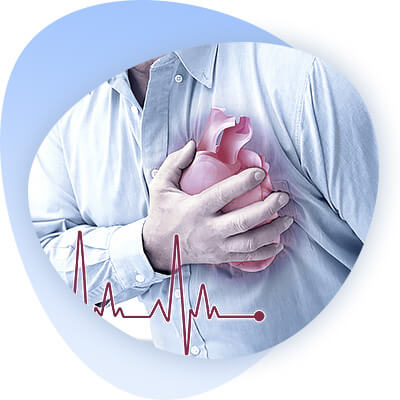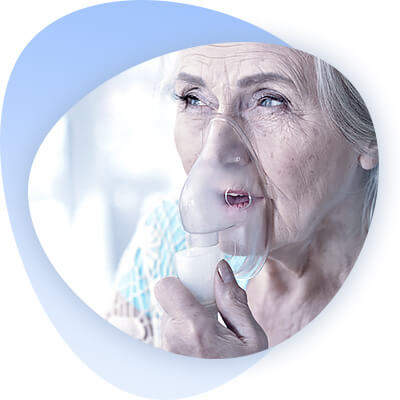Introduction
Smoking a cigarette is a pleasure for the habitual smoker. The need to smoke is felt particularly strongly after eating, drinking, during negative emotions and during hard work. At the same time, the nicotine inhaled itself does not have any positive effect on the body. Cigarettes are more of a distraction: switching the consciousness to them helps to push away unpleasant thoughts, to interrupt hard work. Smoking together facilitates the contact between people, it is a good excuse to get acquainted. The look of a beautifully painted box, the graceful packing, the manner of smoking, the manner of exhaling the smoke have some value. These elements of coquetry and extra personality traits are especially important for women.
But did you know that 1.5 million people die each year on Earth from diseases caused by smoking? Tobacco smoke contains more than 30 poisonous substances! Statistics show that every year between four and five trillion cigarettes (about 1,000 cigarettes for every person on the planet!) are purchased by smokers worldwide (and there are over one billion smokers), spending between $85 billion and $100 billion. Consumption of cigarettes in the world is increasing by 2.1% annually, which means it is growing faster than the world's population. It is no secret how dangerous smoking is, but worldwide about 15 billion cigarettes are smoked daily. It is estimated that in the United States it costs $50 billion a year to treat smoking-related illnesses. This means that in 1993, for every pack of cigarettes purchased, an average of about $2.06 was spent on treating smoking-related diseases. In other cases, the amount it costs to treat these diseases begins to increase the first few days of a person's life. Here's just one example: A study conducted in the United States found that women who smoke have twice the chance of having a child with a cleft lip or palate, and at least four surgeries may be needed before the child is two years old. The average person with this disease will spend $100,000 over their lifetime on treatment and related expenses. And, of course, money cannot measure the heartache of a birth defect.

According to doctors, one-third of all cancers are directly related to smoking. The harmful effect of smoking is not immediate, but gradual. As a result of bad habits is reducing life expectancy, increasing mortality, is born defective offspring. The desire to maintain good health is an important human social need, a necessary condition for a full life, high creative activity and happiness. However, many people, ignoring this danger, continue to abuse tobacco. Numerous surveys conducted among the population have shown that many people do not know or do not know enough about the harm and all the consequences of smoking. Our task is to bring this information to smokers and show that they ruin not only their health, but the health of those around them!
Historical Background
To better understand the problem, let's dive into the past and analyze how the habit spread. As we know, tobacco was introduced to Europe by Columbus. Let us give him the floor: "Having landed on the shore, we set out into the interior of the island. We were met by a multitude of almost naked people, very slender and strong, who were coming from their villages with burning heads in their hands and grass, the smoke of which they drank. Some carried one large cigar and lit it at every stop. Then each took three or four puffs from it, letting the smoke out through his nostrils." The natives treated travelers to tobacco, first smoking themselves and then passing the pipe to the guests. The refusal of the "pipe of peace" was regarded by the hosts as an unfriendly act. The Spaniards did not want to spoil relations with the natives. These Spaniards were probably the first Europeans to become addicted to smoking. Sailors who returned to Spain were looked upon with suspicion: a man letting smoke out of his mouth and nose meant he was mixed up with an unclean force. Smokers imported tobacco seeds and began to cultivate it.
The spread of tobacco met with strong opposition in the countries. In Turkey smoking tobacco was considered a violation of the laws of the Koran, and the guilty were put to the stake. Shah Abbas of Persia ordered the burning of a trader who brought tobacco into an army camp. Pope Urban VII excommunicated those who smoked or sniffed tobacco, and once he walled monks alive for smoking cigars.
In Russia tobacco, apparently, appeared in the late 16th century and also was not very welcomed. Smoking was liable to a very serious punishment - from caning and whipping to cutting off the nose and ears and exile to Siberia. The death penalty awaited tobacco dealers. But gradually the ban on smoking was repealed in one country after another. Over the years, men, women, young people, teenagers and even children took up the bad habit. Smoking fashion appeared: cigarettes, they say, give the girls a special elegance, and to young men masculinity. Cigarettes became a must-have accessory for TV and movie characters.
And what about doctors? Didn't they fight against smoking? They certainly did. But not very successfully. And here's why. They had known for a long time that tobacco was bad for your health. They saw that smokers had a bad cough, they knew that it was hard to breathe in a smoky room, that tobacco interfered with mental work. Experiments showed that animals die under the influence of nicotine. That's when the phrase "a drop of nicotine kills a horse" was born. To be precise, a drop of pure nicotine can kill not one but three horses. But smokers just laughed: I must be tougher than a horse, how much nicotine I consumed and still alive! They consoled themselves: tobacco tar stays on the filter. But nothing passes without a trace... And all this will certainly affect heavy smokers and their children. Currently, the problem of smoking, especially in Russia, is not given enough attention. Advertising of tobacco and related products (cigarettes, cigarettes, etc.) receives incomparably more money than anti-tobacco campaigns. I'll elaborate on this problem a little later. In the meantime, let's look at what pushes people to take up this unhealthy habit.
So why do people start smoking?
The addiction to smoking tobacco occurs at an age when school, parents, and the community can have a great positive influence. It is not necessary to forget that though the habit to smoking develops in childhood and teenage years, the negative attitude to tobacco is also formed in this period of life. The need to smoke is not inherent in the body. It appears as a result of insufficient education and environmental influences. Schoolchildren are drawn to cigarettes, because smoking is fashionable, "prestigious".
Children are characterized by imitation of adults. Smoking by parents, especially the mother, has a very negative effect.
The boys between 8 and 9 years of age smoke because of: peer pressure - in 26.8% of cases, curiosity - in 23.2%, pampering - in 17.8%, imitation of adults - in 16.7% of cases.
In preparation for entering "adulthood," adolescents assimilate "adult norms" of behavior, including smoking. Teenagers see smoking as a sign of independence and adulthood. Smoking in the company becomes a kind of obligation, a ritual, a means to cohesion. High school and junior high school students don't want to fall behind the "fashion", there are some good reasons forcing them to smoke. Usually children and adolescents, in order not to appear weak, hide from their comrades the unpleasant feelings caused by their first cigarettes smoked. Gradually their body adapts, a habit develops which is difficult to get rid of. Unfortunately, rare conversations with doctors about the dangers of smoking among young people do not bring the desired result.
One of the main reasons girls smoke is a "fashion". In our age, "modern woman" can and fashionable to smoke, it is allegedly asserted independence, full equality with men. The very process of smoking in girls is elevated to a certain ritual. This is an unhurried drawing of a cigarette, slowly kneading it with fingers with eye-catching manicure, smoking from a lighter or a match, smoking with the release of smoke through a ring of folded lips. It seems to her that all this "suits" her, allows her to be considered modern. However, a property of fashion is that it comes and goes, and the changes in the body caused by smoking may remain.
Smoking is more and more passed from one generation to the next. As a habit, it has entered the lives of many people, becoming an enduring necessity of life. According to many scientists, smoking is a type of human social behavior. The process of smoking itself is an essential element in human communication.

There is an opinion that smoking increases performance, and many people hide behind this myth. In fact, nicotine has a stimulating effect for a very short time, and then it quickly reduces and impairs performance, both physical and mental. In addition, today the media reinforce the idea that with a lit cigarette in hand or in the mouth a person becomes more attractive, irresistible, independent, relaxed and independent.
This is why many people succumb to the compulsion imposed on them and try smoking, after which it becomes difficult for them to stop.
First smoke
The first time you smoke, you get a scratchy throat, your heart beats fast, and your mouth tastes nasty. All these unpleasant feelings associated with the first cigarette are not accidental. This is a defensive reaction of the body, and it is necessary to use it - to refuse the next cigarette. Before the hour comes when it won't be so easy to do so. When you inhale carbon dioxide displaces oxygen from the blood, as a result of smoking reduces the level of metabolism in the body, i.e. serves as an energy-saving factor. No doubt, smoking at first improves performance, reduces neuroticism, aggressiveness, fear. But all this is like a ticking time bomb - the smoker won't realize his mistake until he is in the hospital with a diagnosis of asthma, cancer or cardiovascular disease. The main danger of nicotine is that, like cocaine, it is a very "subtle drug" that binds our psyche tightly to this active chemical. So is it worth starting? Is the image of a "cool dandy" so important, because it will mean nothing with undermined health? Everyone decides this for himself, but the future of his offspring also depends on his choice...
It's not healthy!
Composition of tobacco and tobacco smoke
Not all smokers know that tobacco smoke contains more than 30 poisonous substances: nicotine, carbon monoxide, carbon monoxide, hydrocyanic acid, ammonia, resinous substances, organic acids and others, and harmful substances - nearly 1200! Let's consider separately the harmful effects of some of these substances.
Nicotine. Nicotine is one of the nerve poisons. Poisons!!! And man takes it of his own free will, "for pleasure"! It is equal to hydrocyanic acid in its toxicity. Birds (sparrows, pigeons) die if just a glass stick dipped in nicotine is placed in their beak. A rabbit is killed by 1/4 drop of nicotine, a dog by 1/2 drop. For humans, the lethal dose of nicotine is 50 to 100 mg, or 2 to 3 drops. This is the dose delivered daily into the blood after smoking 20-25 cigarettes (one cigarette contains approximately 6-8 mg of nicotine, of which 3-4 mg enters the bloodstream). Nicotine is rapidly absorbed from the lungs into the bloodstream, reaching the brain in 7 seconds. Systematic absorption of small, non-lethal doses of nicotine causes the habit, the addiction to smoking, as nicotine is included in the metabolic processes occurring in the human body. In experiments on animals and observations on humans found that nicotine in small doses excites the nerve cells, promotes rapid breathing and heart rate, heart rhythm disturbance, nausea and vomiting. In high doses it inhibits and then paralyzes CNS cells activity, including vegetative. Nervous system disorder is manifested by decreased ability to work, hand tremors, weakened memory. Nicotine also affects the endocrine glands, in particular - the adrenal glands, which release hormone into the blood - adrenaline, causing vasospasm, increased blood pressure and heart rate. Nicotine also adversely affects the sex glands, contributing to impotence in men.
Carbon monoxide and carbon monoxide. These are poisonous gases, colorless and odorless, reducing blood oxygen content, which is especially dangerous for pregnant women and people with heart disease. When carbon monoxide enters the body, oxygen starvation develops due to the fact that carbon monoxide more easily combines with hemoglobin than oxygen, and is delivered with the blood to all human tissues and organs.
Ammonia. Ammonia irritates the mucous membrane of the mouth, larynx, trachea, bronchi. That's why smokers have not uncommonly loose gums, mouth ulcers, often filled up pharynx, which leads to the occurrence of sore throats. From long-term smoking there is a narrowing of the vocal slit, there is a hoarseness of the voice.
Tar. There are over 1,000 chemicals in tar, including many irritants and at least 60 known carcinogens. In the lungs, tar settles in a viscous layer.
In recent years, scientists have paid close attention to cancer-causing substances. These include benzopyrene and the radioactive isotope polonium-210 . If a smoker draws smoke into his mouth and then exhales it through a handkerchief, a brown stain is left on the white cloth. This is tobacco tar. It is particularly high in cancer-causing substances. If a rabbit's ear is smeared several times with tobacco tar, the animal will develop a cancerous tumor.
Consequences
A lethal dose of nicotine is contained in one to two packs of cigarettes. The only thing that saves the smoker from death is that this dose is introduced into the body not at once, but gradually, as the cigarettes are smoked. In addition, the effect of nicotine partially neutralizes another poison contained in tobacco - formaldehyde.
It is estimated that over thirty years, the average smoker smokes 160 kilograms of tobacco, while absorbing 800 grams of nicotine, while the fatal dose of nicotine for humans is about 50-100 milligrams! If a non-smoker ingests a significant dose of nicotine in one sitting, death can occur.
Such cases have been observed in various countries. Our great scientist, pharmacologist N. P. Krafkov, described the death of a young man after he smoked a large cigar for the first time in his life. In France, in Nice, as a result of competition "Who smokes more" two "winners", having smoked 60 cigarettes each, died, and other participants with severe poisoning went to hospital. In England recorded a case where a longtime smoker 40 - year-old man at night, during hard work, smoked 14 cigars and 40 cigarettes. In the morning he felt ill and died despite the medical attention he received. The literature describes a case in which a girl was put to sleep in a room where tobacco was lying in bundles in powder, and she died a few hours later.
Let us consider separately the effect of smoking on the body.
Pulmonary and respiratory system
The large-section airways develop a cough and sputum secretion becomes more active. The small airways become inflamed and narrowed. Prolonged exposure to smoke has a damaging effect on the cilia of the epithelium and makes it difficult for them to function normally. Chronic bronchitis of smokers results in impaired mucus secretion by the cilia. Smokers' lungs show increased levels of inflamed cells. Asthma attacks occur more frequently and take a more severe form. There is a tendency to recurrent respiratory infections.
Cardiovascular system
After every cigarette you smoke, the systolic and diastolic blood pressure increases. The number of heart beats and its minute volume also increase. In addition, cigarette smoke causes vasoconstriction of the peripheral arteries. Along with this, smoking contributes to the development of conditions that lead to blood clots due to: accelerated aggregation and adhesion of platelets, increased plasma levels of fibrinogen and blood viscosity, reducing the life time of platelets and blood clotting time.
Smoking increases total serum cholesterol and plasma free fatty acid levels. Smoking also increases the risk of sudden death and atherosclerotic peripheral vascular disease, which in turn increases the risk of tissue necrosis and limb amputation in these patients. In addition, smoking is directly linked to hypertension and elevated blood cholesterol, which increases the risk of coronary heart disease and cardiovascular disease. Studies have found that the risk of cardiovascular disease and premature death doubles for women who smoke just three cigarettes a day.
Cancer
As early as the 1920s, there was speculation about the link between smoking and cancer. But conclusive evidence was not obtained until the 1950s. Cigarette smoke has been shown to contain carcinogens that act as tumor growth promoters. Numerous studies, including animal experiments, have linked smoking to many forms of malignancy.
Smoking is the leading cause of malignancies of the lip, mouth and pharynx, larynx, esophagus, trachea, bronchi, and lungs.
95% of those who died of lung cancer (according to statistics from different countries) were heavy smokers, smoking 20-40 cigarettes a day, which means that almost all deaths from lung cancer are directly related to smoking. And among laryngeal cancer patients smokers account for 80-90%.
The combination of smoking and alcohol consumption increases the risk of esophageal cancer by 9-15 times and stomach cancer by 9.5 times that of nonsmokers. In addition, a high degree of association has been found between smoking and bladder cancer. There is also evidence of an association between smoking and breast cancer (20%).
Other clinical consequences
A pregnant woman who smokes exposes herself to an increased risk of possible miscarriage, stillbirth or low birth weight baby. Gastric and duodenal ulcers are more common among smokers; moreover, in the case of such ulcers, the risk of death in smokers is higher than in non-smokers. In addition, septic ulcers in smokers are poorly treated.
Several studies have shown that skin quality is affected by exposure to tobacco smoke, regardless of age or sun exposure. Smokers have been seen to experience earlier and more pronounced facial wrinkling, especially around the eyes and mouth, depending on the amount of cigarettes smoked and the length of exposure to smoke. Many smokers develop "smoker's face" or facial wrinkles. Facial wrinkles diverge at right angles from the upper and lower lips, or shallow wrinkles appear on the cheeks and lower jaw.
Smoke can affect the skin in several ways. External exposure to irritating chemicals from smoke can contribute to chronic strabismus, dry or irritated skin, or cause connective tissue damage. Smoking has also been shown to damage collagen and elastin, substances that are also important for maintaining skin elasticity.
Secondhand smoke
Tobacco smoke is not only inhaled by the smoker, but it also enters the surrounding air. Outside of a puff, it basically creates the conditions for passive smoking. Half of the smoke enters the air plus what the smoker exhales. It is understandable that such air is contaminated with nicotine, carbon monoxide, ammonia, tar, benzopyrene, radioactive substances and other harmful components. In a smoking room, air pollution can increase by up to 6 times.
Girls who work in cigarette-smoke-soaked institutional air seem to smoke up to 20 cigarettes a day. The wife of a heavy smoker smokes passively 10 to 12 cigarettes a day, and his children smoke 6 to 7.
Children who live in smoky environments suffer more and more from respiratory diseases. Children of parents who smoke during their first year of life have a higher incidence of bronchitis and pneumonia and a higher risk of developing serious illnesses. Tobacco smoke retards the sun's ultraviolet rays, which are important for a growing child, affects metabolism, impairs the absorption of sugar and destroys vitamin C, which is essential for the child's growth. Between the ages of 5 and 9, the child's lung function is impaired. As a consequence, there is a decrease in the ability to perform physical activities that require stamina and exertion. Children whose mothers smoked during pregnancy are predisposed to seizures. They are much more likely to have epilepsy. Children born to mothers who smoke lag behind their peers in mental development.
The number of allergic diseases has increased noticeably. Scientists have found that nicotine and dry particles of tobacco smoke have an allergic effect. They contribute to the development of many allergic diseases in children, and the smaller the child, the more damage to his body is caused by tobacco smoke.
What to do?
Quitting smoking
Having understood all the harm of this habit, now let's think about how to quit smoking. The method of gradually quitting smoking seems to be unpromising. You can start with it if you smoke a lot (a pack or more a day). Really quit smoking you can only if you have your will in fist and one day refuse to smoke cigarettes once and for all. To quit smoking, the most important thing - really want to. Ask yourself: "Do I seriously want to quit smoking?" Wait for that desire to get stronger. Conventionally, the process of quitting smoking can be divided into two stages - preparatory and final.
Preparatory stage. The task of this stage is to develop a convincing motivation for yourself as to why you want to quit smoking. Write down every cigarette you smoke in a day. Put on paper the reasons why you need to quit smoking - the desire to improve your health, the desire to extend his life, the desire to live a full life, a commitment to your family, the need to rid your children of this bad habit, the opportunity to save money, you will be subtler taste food and drink, morning cough will disappear, reduced susceptibility to respiratory diseases and other benefits of life without smoking. Hang this sheet in a prominent place and read it daily. Collect cigarette butts in a jar of water. Keep the nasty stuff in front of your eyes and think about what's going on in your lungs.
Final Stage. Designate a day, circle that number on a calendar, and from that day, quit smoking completely. When the day of your choice comes, from that moment nothing should be more important to you than your goal. Now your task is to overcome a strong desire to smoke when it will occur (usually it will not last more than 5 - 10 minutes). When this desire comes, you have to confirm for yourself your determination to quit smoking and try to divert your attention to something else. Try to get all your family members or close friends to quit at the same time, so that you can support each other during the difficult first days. In the first days, use any means to replace your cigarette - chew gum, twirl a pen or pencil in your fingers if you don't know where to put your hands without a cigarette. Use nicotine replacement medication to overcome withdrawal syndrome. Try relaxation techniques to relieve tension. Be glad that you are not smoking! Don't forget: You are saving a lot of money. Use it as a reward fund for yourself. For the first few weeks, eat as much as you want, but let it be healthy food. Experiencing stress and anxiety (the results of overcoming addiction) will make you want to snack extra and you may gain a few extra pounds. Remember that the first four weeks are the hardest.
Now let's see what can help us quit smoking. The most common way is to replace smoking with nicotine-containing products. These are nicotine patches, chewing gum, inhalers. The mechanism of their action is the same: they provide access to nicotine in the body, thereby protecting the person from an unpleasant withdrawal syndrome. The stimulating effect of nicotine on the cardiovascular system remains, but the toxins in tobacco smoke no longer enter the body. These remedies can be used long enough until the craving for cigarettes disappears.
Nicotine patch. The nicotine patch is applied to your shoulder or thigh once a day and allows a certain dose of nicotine to enter your body through your skin. The course lasts 8 to 10 weeks. Every three weeks, the patch is changed to a weaker one. Some people may experience skin irritation under the patch. In this case, next time stick it on a different place. According to scientists, the advertised nicotine patch is still far from perfect, in addition, nicotine enters the body in a completely different way, "not cigarette", losing, apparently, on the way all the properties loved by smokers, and at the same time the effectiveness.
Nicotine chewing gum. Nicotine gum provides nicotine through the mucous membrane of the mouth. Its disadvantages are unpleasant taste for some people and the need for a long time, about 30 minutes, to chew and keep in your mouth (if you quickly chew and swallow saliva its effect is reduced). Sometimes it causes an upset stomach. But it is strong enough to help even heavy smokers.
Nicotine Nasal Inhaler. This is one of the newest nicotine substitutes. It should be used if neither the patch nor the gum have helped. A nicotine inhaler is shaped like a cigarette and allows you to inhale nicotine. But you have to take about 80 "puffs" to get the dose of nicotine contained in one piece of chewing gum, which is not always convenient.
Other ways to help quit smoking are the use of special medications (as recommended by your doctor). They do not contain nicotine, but are antidepressants that restore mental balance during the initial period of quitting smoking. They allow you to get rid of palpitations and other negative symptoms associated with nicotine consumption. It makes sense to use them only for "inveterate" smokers. It is also possible to rinse the mouth with special solutions which induce aversion to smoking. Ziban is the world's first nicotine-free pill for smoking cessation. It silences the symptoms of the body's restructuring in the brain. The first three days of therapy smoker takes one pill, then every day two and gradually reduce the number of cigarettes.
Alternative methods of quitting smoking include acupuncture (reflexology) and hypnosis. In acupuncture, needles are inserted into the auricle, affecting certain structures of the brain. The result is the destruction of the "smoker's reflex. The method of hypnosis is that by bringing the patient to a state of relaxation, the doctor suggests that he is disgusted by smoking. It is believed that at the moment of smoking cravings, the patient will "remember" these attitudes. The success rate, according to control tests, is 30%.
Thoughts of the greats about smoking
Many smokers refer to the fact that many prominent people, such as Darwin, Newton, Gorky, the composer Rachmaninoff and even a scientist-therapist Sergei Botkin - smoked. And smoking did not prevent them from achieving success.
What do people who are considered talented and distinguished say about this bad habit?
The writer A. Dumas - Junior: "... I put away my cigarette and swore that I would never smoke. This vow I have kept firmly, and I am quite convinced that tobacco harms the brain as definitely as alcohol.
Leo Tolstoy, after quitting smoking, said: "I became a different person. I sit for five hours a day at work, I get up absolutely fresh, while before, when I smoked, I felt tired, dizzy, nauseous, foggy in the head...".
The great physician Sergei Botkin was an avid smoker. Dying, still relatively young (57 years old), he said: "If I did not smoke, I would have lived 10-15 years". How much more he would have done for science, for saving people, but, alas, he could not get rid of his addiction, could not save himself.
And here is the opinion of the greatest chess player A. Alekhine: "... nicotine weakens memory, destroys the nervous system and weakens willpower - an ability so necessary for the chess master. I can say that I only gained confidence in winning the world championship match when I got rid of my passion for tobacco.
Multiple national skating champion I. Anikanov wrote: "I believe that my sporting achievements are in no small part due to complete abstinence from smoking. My ardent advice to everyone is to give up this bad habit.
The popular film director and actor Nikita Mikhalkov, who quit smoking, said: "To quit smoking, you have to realize that without it you can live and live better. When asked - what he replaced smoking, he said: "Sports. I do tennis, soccer, swimming, and running.
Solutions to the Problem
What are the very measures that developed countries use to get rid of smoking? First of all, there is a total ban on tobacco advertising and the promotion of non-smoking. Special attention should be paid to the package of measures of economic influence on smokers. Many firms and companies pay monthly bonuses to non-smokers. Indeed' smokers are periodically absent from work to take another dose of nicotine, i.e. their productivity is reduced. Less productivity means less pay. This method was found to be the most effective. The next most effective method is a ban on smoking in public places' including on the street. The logic is very simple: a smoker has a harmful effect on others. Here especially impatient and uncultured people smoke in the subway underpasses. Speaking about helping non-smokers, we can offer free treatment and a sanatorium vacation to those who suffer from allergies to tobacco and from the contamination of the body with products of cigarette smoke. But all this requires a revision of both economic and social policy of the state in which we live.
As for smoking among teenagers', in this situation the appealing factor is the desire to look like an adult, i.e. it is imitation; only then does the habit take root, and then the addictive factors come into play. Thus, by reducing the attractiveness of smoking among adults through the above measures' it is possible to eliminate the addiction among adolescents. There is no need to avoid "sensitive" topics, to put on our children rose-colored glasses, to pretend that there is nothing bad in our life, and if there is, then somewhere far away, in another place. Let them see what they are doing and at what price they are buying a "high," let them know that the payback is imminent - with their health, their happiness, their lives. And before it's too late, before it's hopeless, let's all think together about how to fill these gaping voids. Children need more attention, both from parents and from teachers, who need to observe more the aspirations and propensities of the students. Many countries have passed laws prohibiting teenagers from smoking.
So why do they sell cigarettes in kiosks? Yes, because, unfortunately, categorical prohibitions do not always influence the inveterate smoker. All kinds of homemade, surrogates are much more harmful than factory-made tobacco. Simply forbidding people to smoke is probably still impossible, but it is possible to convince them to quit.











